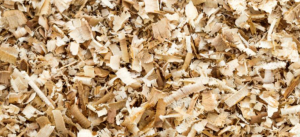 Be aware of surprising dangers in horse pastures, hay, and bedding! Imagine: you’ve just bought a new farm. You’ve turned your horses out into their pasture while you wait on the delivery of alfalfa hay. Wood shavings for stall bedding will be delivered later in the day. You’re all set…as long as you are aware of possible dangers as horses graze, eat hay, and encounter certain types of wood shavings in their stalls.
Be aware of surprising dangers in horse pastures, hay, and bedding! Imagine: you’ve just bought a new farm. You’ve turned your horses out into their pasture while you wait on the delivery of alfalfa hay. Wood shavings for stall bedding will be delivered later in the day. You’re all set…as long as you are aware of possible dangers as horses graze, eat hay, and encounter certain types of wood shavings in their stalls.
In some areas of the country, pastures may contain harmful varieties of sudangrass or sudan-sorghum hybrids. The problem is most severe when horses are allowed to graze pastures that have been stressed.
Sudangrass:
Drought, freezing temperatures, and injury to the plant such as by trampling seem to increase the danger of these pastures when grazed by horses. A glycoside in the plant is converted to prussic acid in the gut. Besides cystitis, prussic acid poisoning may cause incoordination, muscle tremors, nervousness, respiratory distress, and even death from respiratory failure. Property owners can ask the local agricultural extension agent to check their fields for the presence of sudangrass and to suggest the best way to eliminate it from horse pastures.
Blister Beetle Poisoning:
Blister beetle poisoning is a danger when horses eat hay that is contaminated with these insects. They can be found in many areas of the country, but may be most common in hay produced in the southwest United States, where blister beetles are found in large concentrations. The toxin responsible for the expression of toxicity is cantharidin, which is present in the beetle and relatively stable over extended periods of storage.
It takes only a few blister beetles, when ingested by the horse, to be fatal. Beetles are baled with hay and then eaten inadvertently, resulting in severe illness or death. The problem of blister beetles has become more pronounced since the replacement of the sickle bar mower with mower conditioners that crush the beetles rather than allowing them to crawl from the windrow as was the case for the older method of cutting hay.
Cantharidin, the toxin in blister beetles, is an extreme irritant to the digestive tract, causing necrosis of the gut mucosa, the gastric mucosa, and the lining of the esophagus as well as irritation to the urinary tract. Affected horses may show severe colic and discomfort, an elevated respiratory and heart rate, diarrhea, and dehydration. Death usually occurs within 48 to 72 hours after ingestion of the beetles.
Treatment is designed to reduce insult to the gut and includes fluid therapy and analgesics. The best way to avoid the problem is to feed hay grown in areas where blister beetles are not found. Usually first-cutting hay contains few if any blister beetles because it is produced before the beetles mature.
Wood Shavings:
Wood shavings are commonly used as bedding for horses. Advantages are easier stall cleaning and possibly lower cost than purchasing straw. Shavings from many softwoods and hardwoods are appropriate for use as bedding material for horses. Black walnut shavings shouldn’t be used for bedding because use of shavings from this tree may result in severe laminitis.
As little as 5% contamination with black walnut shavings in a larger batch may be enough to expose horses to enough of the laminitis-causing toxin. Ask your supplier to be certain that no black walnut shavings are included in your order if you plan to bed stalls with wood shavings.
Interested in learning more about surprising dangers in horse pastures, hay, and bedding and managing the safety of your pasture? Visit or call J & J Hay Farms for more information!
Article brought to you by Kentucky Equine Research.
